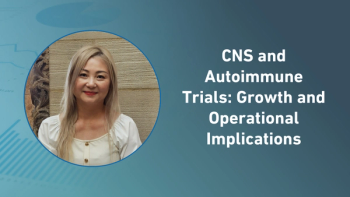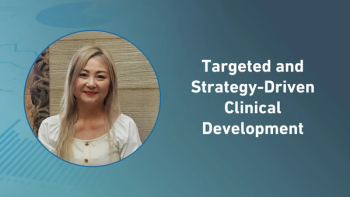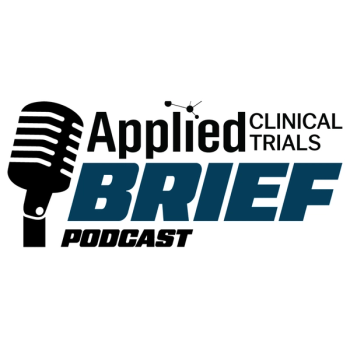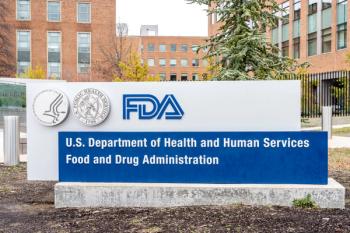
The Importance of Real-World Evidence in Medical Research and Drug Development
The ongoing evolution of real-world evidence from a novel concept to a cornerstone of modern medical research signifies its growing importance and vast potential to improve personalized medicine, overall healthcare outcomes, and eventually democratization of scientific facts by general accessibility.
Introduction
As the gold standard for clinical research, randomized controlled trials (RCTs) are central to scientific knowledge gain and evidence generation as they are meticulously designed to eliminate bias, providing clear, impartial results on the effectiveness of medical interventions. However, critiques often revolve around the challenges of applying findings from highly controlled trial environments to the general population.
People who are included in clinical trials are, in general, predominantly male, younger, white, and seem to have a higher socio-economic status than the respective population having the disease in question. Also, children, juveniles, elderly, and pregnant or breastfeeding women are often excluded, though this is done intentionally for safety reasons. Moreover, the conditions of a trial typically do not perfectly mirror real-world conditions, in which patient behaviors and environments vary significantly. This discrepancy can lead to significant challenges when trying to apply trial findings universally.
Real World Data and Evidence
Thanks to provisions in the 2016 21st Century Cures Act, real world data (RWD) play a significant role in medical research. According to an FDA definition, real-world data is, in general, data collected outside the system of controlled clinical trials, i.e., as part of routine clinical practice, including electronic health records, insurance claims data, or collected by patients via smartphones or other digital health devices. Real-world evidence (RWE) is the scientific knowledge obtained from such data by proper analysis and interpretation.1
In the realm of pharmaceutical development and healthcare, RWE has emerged as a pivotal element in enhancing our understanding and application of medical treatments. It has profoundly impacted our ability to understand the impact of risk factors, the demographic of affected patients, the natural course of diseases, and the long-term effect of therapeutic interventions.
Some RWD providers have yet to understand the phenomenal potential of RWD, or the business opportunities it presents. Most professional organizations with access to RWD still identify themselves as a “data broker,” primarily selling RWD to the research and marketing departments of pharmaceutical companies, allowing them to better assess the disease landscape for new products and to design clinical trials in a more efficient way.
Indeed, RWD has revolutionized the strategic planning of clinical trials, reducing pharmaceutical industry R&D costs. The traditional site selection process, often constrained by theoretical data or prior assumptions (or even worse, so-called expert knowledge from a limited number of opinion leaders), is now being transformed by insights derived from real-world data.
This approach has enabled us to identify and select trial sites based on where eligible patients are actually located, thereby enhancing the relevance and efficiency of these studies. By analyzing healthcare utilization patterns across regions, it is possible to pinpoint hospitals and clinics that not only have the necessary patient demographics, but also the infrastructural capabilities to support the trial. This data-driven strategy not only expedites the trial setup, but also improves its operational efficiency and the quality of data collected, contributing to a smoother regulatory review process.
RWE role in the regulatory environment
Regulatory bodies, such as the FDA, assess and approve new drugs or indications predominantly based on knowledge from randomized clinical trials. RWD adds innovative nuances but is only just beginning to affect drug approval processes. In some individual cases, the FDA utilized RWE to grant approval for a new drug indication, a groundbreaking decision that underscored the growing acceptance of real-world data. The burgeoning acceptance of RWE by regulatory authorities marks a significant milestone in healthcare.
In 2017, the FDA approved a new procedure for a transcatheter aortic valve replacement (TAVR) after evaluating a database containing records of more than 100,000 TAVR records, including 600 records relating to the then off-label use of the new procedure.2 This so-called valve-in-valve procedure was shown to be an improvement, as it allowed the new valve to be placed inside the diseased valve. The FDA evaluated the clinical and functional data for this procedure from the registry to expand the indication for the TAVR-enabling device without requiring traditional RCTs, saving both time and money.
In 2021, the FDA approved a new indication for Prograf (tacrolimus) based on RWE from a non-interventional study. The approval was for the use of Prograf in combination with other immunosuppressant drugs to prevent organ rejection in patients receiving lung transplants. The study analyzed data from the U.S. Scientific Registry of Transplant Recipients on lung transplant recipients and found that patients receiving Prograf experienced improved outcomes.3
The implications of this are vast. It means that the data we gather from everyday healthcare interactions could directly influence the availability of treatments, potentially speeding up the process and making effective treatments available more swiftly to those in need.
This shift in regulatory acceptance—an area where data quality, statistical methods, and scientific perfection are paramount—speaks volumes about the evolving landscape of medical research. Traditionally, the rigidity of RCTs was the gold standard for evidence.
Though they remain crucial, the integration of RWE suggests a burgeoning recognition of the value of the vast pools of data generated outside these controlled environments. The data derived from electronic health records, insurance claims, and patient registries offer a complementary perspective that is rich with real-life context, making it an invaluable asset in our quest to understand and improve patient outcomes.
Reflecting on this, the potential for future drug development and accelerated approval processes is immense. RWE could streamline the pathway for innovations in treatment, particularly for conditions where time is of the essence. By harnessing the power of these data, we see a future in which therapeutic advances reach patients faster and are grounded in evidence collected from the very environments where they will be applied.
RCT and RWE in medical practice
The influence of RWE extends beyond regulatory realms and into the very core of medical practice, particularly in the treatment of chronic diseases like cardiovascular conditions. Let’s look, for example, at the evolving understanding of aspirin's role in cardiovascular risk management.
For decades, aspirin was the cornerstone of preventive treatment in patients with coronary artery disease.4 However, new RWE studies have shed light on its benefits and limitations, prompting us to critically reevaluate its use critically in terms of its benefit/risk ratio, especially the preventive effect versus a potential bleeding risk.5
Another area where RWE is reshaping our approach is in the treatment of acute conditions, such as myocardial infarction. The traditional use of beta-blockers post-heart attack has been a staple in cardiovascular treatment. However, recent analyses of RWE have prompted us to critically reassess this practice.6
By examining patient outcomes in real-world settings, researchers have observed variations in the effectiveness of beta-blockers that were not apparent in more controlled trial environments. This kind of data compels us to question and potentially revise long-standing medical guidelines, ensuring they are truly reflective of the best available evidence.
The challenge here is not just scientific but also cultural, as it requires shifting long-established beliefs and practices within the medical community. These studies paved the way for adjustments in medical guidelines that are more in tune with contemporary data, enhancing patient safety and treatment efficacy. It underscores the need for ongoing guideline review, ensuring that broadly enforced guidelines reflect the best available evidence, ultimately leading to superior patient outcomes.
Because RCTs evaluate safety and efficacy under controlled artificial experimental conditions in an extremely selected patient population, we must ensure that their results are applicable in the real world, i.e., outside the experiment. Research presented in 2023 to the American Society of Hematology specifically compared the effectiveness of treatments for multiple myeloma (MM) in clinical trials versus RWD.7
They compared electronic health records from the publicly funded healthcare system in Ontario, Canada, with corresponding Phase III RCTs about the respective treatment regimens. RWD of 3951 MM patients treated with seven standard of care MM regimens were included.
Not surprisingly, patients from the real-world dataset were older than in the clinical trial’s population, which confirmed that clinical trial participants are usually a highly selected subgroup of patients. The results showed that six of the seven evaluated treatment regiments in the real world had 1.44 times worse progression-free survival and 1.75 times worse overall survival than in the respective clinical trial. These results emphasize the importance of RWD to evaluate the real effectiveness of treatments in the clinic and to better inform both clinicians and patients for treatment decision-making.
These examples highlight the transformative impact of RWE across various facets of medical science—from clinical trial design to regulatory approvals and guideline development. As we continue to navigate this evolving landscape, the integration of RWE holds the promise of more informed, efficient, and effective healthcare delivery, ultimately enhancing patient care and outcomes. This is essential for the future, a future where evidence from the real world informs every aspect of our medical understanding and practice.
Ongoing Challenges
As we delve deeper into this new frontier, we must address the myriad misconceptions that arise, particularly among healthcare professionals and patients. It's crucial to clarify what RWE is and is not and address the concerns surrounding its use, especially regarding data privacy.
Misunderstandings about RWE often stem from its very nature. Unlike data from controlled clinical trials, RWE is collected from routine healthcare settings—data that was initially not meant for research and are inherently incomplete. While in a controlled clinical trial, the data collection is usually very close to 100%, the real world looks very different. In 2020, a very large real-world study was published to compare the effectiveness of three bariatric surgery procedures for weight loss in overly obese patients.8
During the screening of the data from more than 79,000 patients who would have otherwise qualified for the analysis, it became apparent that 16% of patients had missing values for body mass index (BMI) in their files. It is unimaginable that one in six patients don’t have weight and height documented, even if they undergo surgery for weight loss; however, this is the real world.
This leads to doubts about RWD’s reliability and validity. Many clinicians and patients wonder whether such data can truly stand up to the rigor of scientific scrutiny. Here, education plays a pivotal role. It's about explaining that RWE complements, rather than replaces, traditional clinical trials and subsequently broadens our understanding by providing insights into how treatments work in the diverse tapestry of real-world settings.
Data privacy, a critical concern in our digital age, intensifies these discussions. Patients and practitioners alike worry about the potential misuse of sensitive health information.
As we integrate RWE into more aspects of medical research and practice, it is paramount to uphold strict data privacy standards and reassure all stakeholders that their information is protected. We must communicate clearly how health data for RWE is anonymized and aggregated to ensure that individual privacy is maintained.
Discussion and Outlook
Looking ahead, the role of RWD and RWE in medicine is poised to expand even further. As we collect more comprehensive data sets, the potential to tailor medical treatments to individual needs becomes increasingly more feasible, heralding a new era of personalized medicine.
Moreover, RWE holds the promise of filling significant research gaps, particularly in conditions or populations who are under-represented in traditional studies. For example, rare diseases, which often struggle to amass the large cohorts needed for conventional trials, can benefit immensely from the broader and more inclusive nets cast by RWE.
The future implications of RWE also extend into policymaking and health system planning. With a clearer picture of how treatments work in diverse, real-world environments, policymakers can make more informed decisions about resource allocation, treatment accessibility, and public health strategies. This is particularly crucial as we strive to address health disparities and ensure that advancements in medical science translate into equitable improvements in patient care across all sectors of society.
As we continue to navigate these challenges and opportunities, it's essential to maintain a dialogue that is both informed and inclusive. By fostering a better understanding of what RWE can and cannot do and addressing the ethical considerations that accompany its use, we can ensure that this powerful tool realizes its full potential to improve health outcomes and advance medical knowledge. With each step forward, we are not just observing changes in healthcare—we are participating in a paradigm shift that redefines what is possible in medicine.
Another milestone, still far away in the future, would be to expand the availability of aggregated real-world data from a select, paying elite of scientists, academics, and pharmaceutical researchers to everybody. This would represent an actual democratization of knowledge.
The same way we can do a Google search for free today instead of spending hours in the library browsing through dozens of magazines and books like we did 30 years ago, we should be able to access the vast opportunity and hidden information of medical knowledge in a simple, easy-to-understand, and low-cost way. Respective business models to finance this democratization of knowledge will have to be found.
References
1. https://www.fda.gov/media/171667/download
2. https://www.fda.gov/news-events/press-announcements/fda-expands-use-sapien-3-artificial-heart-valve-high-risk-patients
3. https://srtr.transplant.hrsa.gov/
4. Arnold S. Relman, M.D., N Engl J Med 1988;318:245-246, DOI: 10.1056/NEJM198801283180410,
5. John J. McNeil, N Engl J Med 2018;379:1509-1518, DOI: 10.1056/NEJMoa1805819,
6. Troels Yndigegn, M.D, N Engl J Med 2024;390:1372-1381, DOI: 10.1056/NEJMoa2401479,
7. ASH, Sunday, December 10, 2023, A Visram et.al., # 541
8.
Funding statement
This Analytical Report did not receive any sponsorship or funding. The author did not receive compensation for this work.
Conflict of Interest statement
The author is former Chief Medical Officer of TriNetX and founder and principal of Candid-Advisory, Inc.
Newsletter
Stay current in clinical research with Applied Clinical Trials, providing expert insights, regulatory updates, and practical strategies for successful clinical trial design and execution.






.png)



.png)



.png)
.png)
